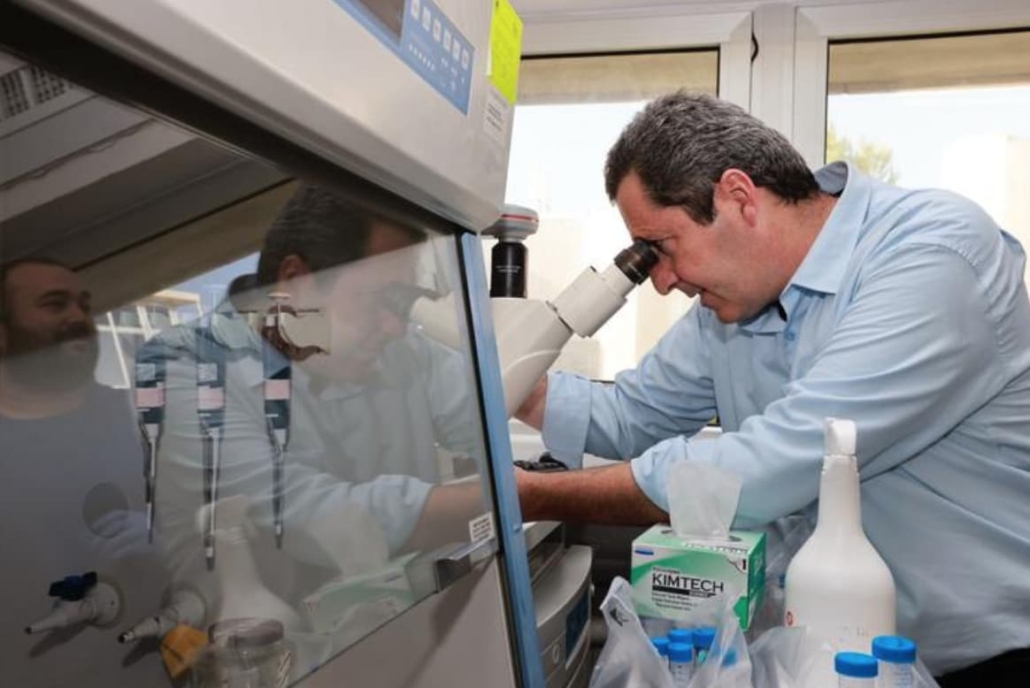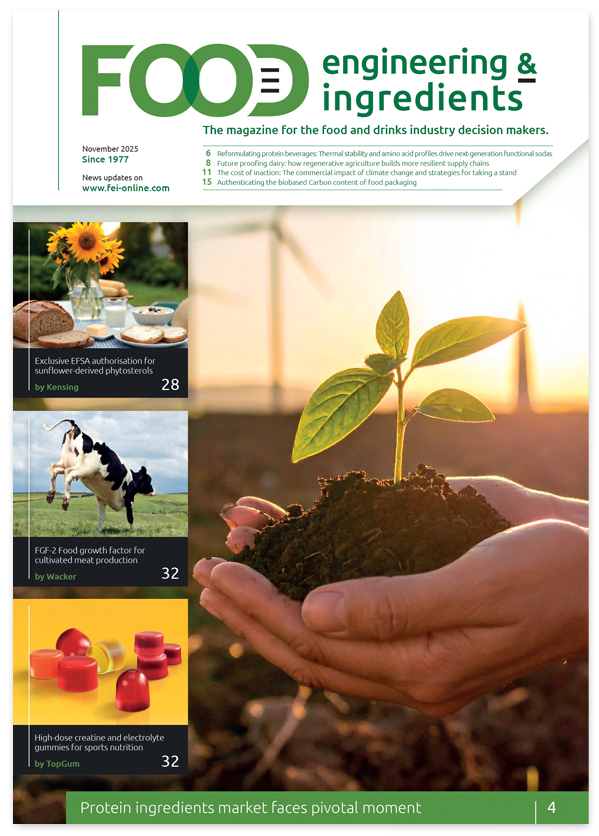New ‘continuous manufacturing’ method demonstrates cost-effective production of cultivated meat
A recent study published in Nature Food presents empirical evidence for the economic feasibility of cultivated meat production using a continuous manufacturing process. The research, led by Professor Yaakov Nahmias of the Hebrew University of Jerusalem, addresses key challenges in scalability and cost-effectiveness that have previously hindered the widespread adoption of cellular agriculture.

Professor Yaakov Nahmias works in his lab.
The study [1], titled “Continuous Manufacturing of Cultivated Meat: Empirical Economic Analysis”, introduces a novel bioreactor assembly that utilises tangential flow filtration (TFF) for the continuous production of cultivated meat. This system achieved biomass expansion to 130 billion cells per litre, with yields of 43% weight per volume. Notably, the process operated continuously over a 20-day period, allowing for daily biomass harvests.
A crucial component of the research was the development of an animal component-free culture medium, priced at £0.49 per litre, which supports long-term, high-density culture of chicken cells. This represents a significant reduction in raw material costs, which have been a major hurdle in the economic viability of cultivated meat production.
Professor Nahmias explained the inspiration behind the research: “We were inspired by how Ford’s automated assembly line revolutionised the car industry 110 years ago. Our findings show that continuous manufacturing enables cultivated meat production at a fraction of current costs, without resorting to genetic modification or mega-factories.”
Economic analysis
Using the empirical data gathered from their experiments, the research team conducted a techno-economic analysis of a hypothetical 50,000-litre production facility. The analysis suggests that the production cost of cultivated chicken could potentially be reduced to £4.86 per pound, which is comparable to the price of organic chicken.
Dr Elliot Swartz, Principal Scientist at Cultivated Meat, The Good Food Institute, emphasised the significance of the study’s findings: “This important study provides numerous data points that demonstrate the economic feasibility of cultivated meat. The study confirms early theoretical calculations that serum-free media can be produced at costs well below $1/L without forfeiting productivity, which is a key factor for cultivated meat achieving cost-competitiveness.”
Implications for cellular agriculture
The research represents the first demonstration of cost-efficient manufacturing of cultivated meat based on solid empirical data. It addresses several key challenges that have previously been identified in techno-economic analyses of cultivated meat production:
- Factory costs: The novel filter stack perfusion system reduced overall factory costs.
- Raw material costs: The animal component-free medium significantly lowered the cost of culture media.
- Factory capacity: The continuous manufacturing process increased factory capacity, projecting an annual production of 2.14 million kg of cultivated chicken for a 50,000-litre facility.
As global demand for animal protein is projected to double by 2050, cellular agriculture offers a potential solution to meet this demand without further straining traditional livestock production systems. The researchers suggest that this technological advancement could have significant implications for animal welfare, food safety, and food security, particularly in the context of a changing climate.
While the study demonstrates the potential for cost-effective production of cultivated meat, the authors acknowledge that various other factors will affect the final market price. However, this research underscores the potential of continuous manufacturing to significantly lower production costs, potentially making cultivated meat more accessible to consumers and competitive with conventional meat products.
The collaborative effort involved engineers, biologists, and chemists from the Hebrew University of Jerusalem and ADM-funded Believer Meats. The latter is currently constructing what is claimed to be the world’s first large-scale industrial production facility for cultivated chicken.
As the field of cellular agriculture continues to advance, this study provides a solid foundation for further research and development in the cost-effective production of cultivated meat.
Reference:
- Pasitka, L., Wissotsky, G., Ayyash, M. al. (2024). Continuous Manufacturing of Cultivated Meat: Empirical Economic Analysis. Nature Food.
https://doi.org/10.1038/s43016-024-01022-w


